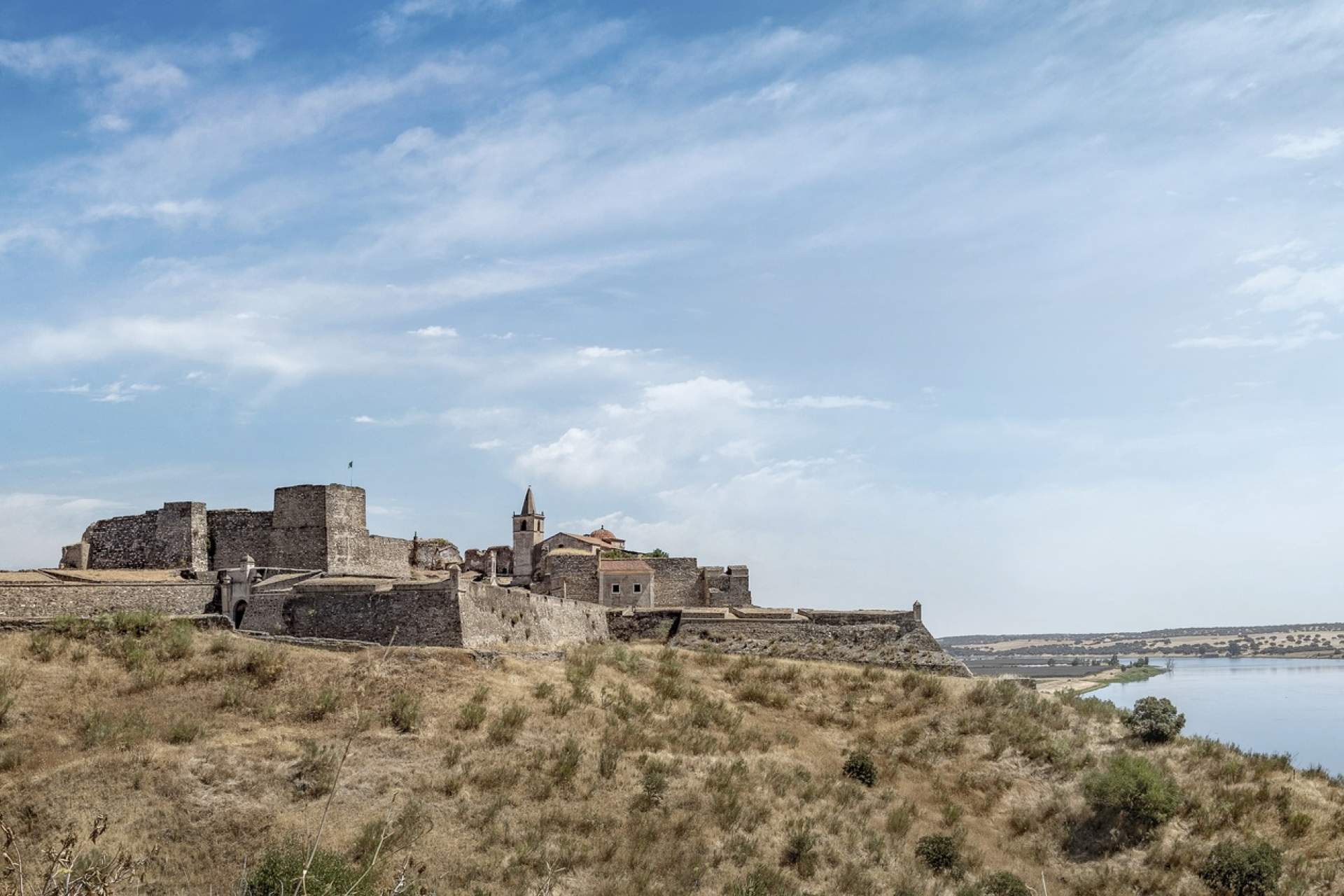
Juromenha Fortress
Nicknamed the "sentinel of the Guadiana", due to its privileged location on the banks of the river overlooking the territories of neighbouring Spain, Juromenha and its border fortress played a strategic role at the time of Al-Andalus, and was mentioned by the geographer Ibn Hawqal, who travelled the Iberian Peninsula in the 10th century, in his work "Kitâb Sûrat al-Ard" (Book of the Image of the Earth).
In fact, as a crossing point between Santarém and Elvas, the Juromenha castle played a decisive role for over two centuries as the stronghold of the defensive system of the Badajoz region.
In 1167, Geraldo, The Fearless, conquered Juromenha for the first time on behalf of the Portuguese monarch Afonso Henriques, but Juromenha returned to Muslim rule in 1191, when the territories were retaken by the Muslim advance of Almanzor. This area of defence of the Guadiana would only be definitively reconquered for the Portuguese Crown in 1242, by D. Paio Peres Correia, Master of the Order of Santiago.
In the last phase of Islamic occupation, already under Almohad rule, Juromenha would have been a ribat - a fortified Muslim hermitage dedicated to jihad, or holy war -, as revealed by the philosopher Ibn 'Arabi, one of Islam's most famous mystics, who refers to the Juromenha castle as a ribat defended by Muslim volunteers who divided their time between war and spiritual activities.
The fortified ensemble of Juromenha still preserves two walled enclosures: part of the medieval walled perimeter, of which the Islamic period walls stand out, and the other consisting of the fortifications built during the Portuguese Restoration War.
The best-preserved traces of Islamic construction can be found on the north and northwest walls and in the area of the South Gate (Porta Sul). This is the case of a tower situated in the north-western corner of the wall. This tower is surrounded by ramparts made of military-style rammed earth, a wall supported by a group of towers which are close to each other and regularly spaced, with straight entrances, similar to what happens in fortifications from the Caliphal period (10th century).
Phone:
Email:
Website:
Timetable:
Temporarily closed for visits due to restoration works
Close
Search results for:
No results were found matching your search.
Information available soon.



